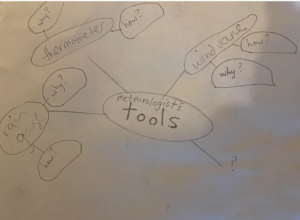There are five stages of phonemic awareness and we will break down each one in this simple post.
But, first: What is phonemic awareness?

Phonemic awareness is a critical skill for early literacy development. It’s one of the first building blocks for reading. Basically, it is the ability to hear, identify, and manipulate individual sounds (phonemes) in spoken language.
And, we build phonemic awareness through 5 stages, discussed below.
What are the 5 stages of phonemic awareness?
Here are the five stages of phonemic awareness. As you might have guessed, the stages start from simple tasks to more complex tasks.
Let’s dive into each one in more detail.
1. Rhyming Awareness
At this stage, children become aware of words that rhyme. They can recognize and produce rhyming words, such as cat and hat.
2. Segmentation
In this stage, children learn to break words into individual sounds or phonemes. For example, they can isolate the initial sound in the word “cat” (/k/) or identify the final sound in “dog” (/g/).
3. Blending
Blending involves combining individual sounds or phonemes to form words. For instance, a child might be asked to blend the sounds /b/, /a/, and /t/ to form the word “bat.”
4. Isolation
At this stage, children can isolate and identify specific phonemes within words. For example, they can identify the middle sound in “cat” (/a/) or the final sound in “sand” (/d/).
5. Manipulation
This is the most advanced stage of phonemic awareness. Children can manipulate phonemes within words by adding, deleting, or substituting sounds. For instance, they can change the /c/ in “cat” to /r/ to create “rat.”
These stages represent a progression of phonemic awareness skills. Each stage building on the previous one. You can think of them as steps up a ladder.
So, how can we use these phonemic ‘steps’ in the classroom?
How can a teacher use the phonemic stages to teach literacy?
As a teacher, you can use the stages of phonemic awareness as a framework to teach literacy skills effectively. There are many ways to incorporate each stage into your teaching.
Here are some ways to use the phonemic ‘steps’ to literacy in the classroom”
- Rhyming Awareness:
- Use rhyming books and songs to help students recognize and generate rhyming words.
- Encourage students to come up with their own rhymes or complete rhyming pairs in activities.
- Segmentation:
- Practice segmenting words into individual sounds by clapping or tapping for each sound.
- Use visual aids, like tokens or counters, to represent each sound in a word.
- Start with simpler words and gradually progress to more complex ones.
- Blending:
- Begin with simple consonant-vowel-consonant (CVC) words and have students blend sounds together to form words.
- Use word cards or magnetic letters to physically manipulate sounds and blend them.
- Play games like “Guess the Word” where students listen to individual sounds and guess the word.
- Isolation:
- Ask students to identify the initial, middle, or final sounds in words. For example, “What is the first sound in ‘cat’?”
- Use word sorts to categorize words based on specific sounds.
- Gradually increase the complexity of tasks, such as identifying blends or digraphs within words.
- Manipulation:
- Challenge students to change one sound in a word to create a new word (e.g., change “cat” to “bat”).
- Have them delete or add sounds to words (e.g., remove the /s/ sound from “sand”).
- Introduce word families and explore how changing the initial sound creates new words (e.g., cat, hat, mat).
Incorporating these activities into daily lessons and literacy centers can help students develop strong phonemic awareness skills. These skills are foundational for reading and spelling.
Make sure you progress gradually. Ensure students master each stage before moving on to the next.
And, if this post interests you, you might enjoy the posts below.







